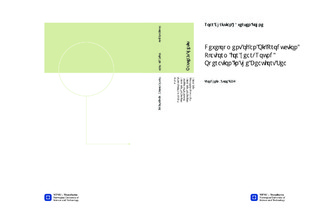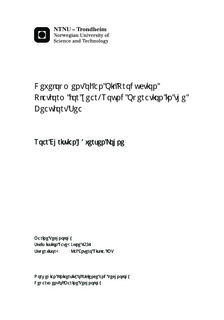| dc.description.abstract | Due to high expectancy of hydrocarbon resources in the Beaufort Sea itis seen as an important area for energy in the future. As the focus nowis shifting towards the deeper parts of the sea, there is a need for floatingproduction platforms that are able to operate year-round in the harsh con-ditions of the Beaufort Sea. In this Master s thesis the design of such aplatform is performed, with respect to global ice loads acting on the plat-form and the capacity of the stationkeeping system. This is used to analysethe operability of the platform.To be able to develop a floating production platform it is crucial to haveinformation on ice conditions in the Beaufort Sea. Literature has been usedto determine ice conditions in the seasonal transitional zone, where it isexpected that the platform will operate. Factors such as level ice, first-year and multi-year ridge dimensions, floe size and ice island mass havebeen defined. These define some of the most common ice conditions in theBeaufort Sea, and as such represent ice conditions a platform can expect tomeet.Functional specifications have been used to determine the most appropriateplatform type. Several platform types were considered based on factorssuch as production and storage, ice loads, and ice interaction with risersand mooring lines. A circular FPSO was selected due to its insensitivity toice drift direction. To reduce ice loading, the platform was designed as adownward sloping cone.Ice loads on the platform have been calculated using several methods com-monly applied in literature. Results show that managed ice yields lowestloads, followed by level ice. Higher loads are seen for ridges, both first-yearand multi-year, and large ice floes.A water depth of 500 m was assumed for the location of the platform. Since this can be considered as a moderate water depth, a conventional mooring system was selected for stationkeeping. The system has 24 mooring lines connected to a buoy, which again connects to the turret on the platform. Internal mooring was seen as necessary to protect mooring lines from ice. Restoring coefficients have been determined using the inelastic catenary equations. Maximum allowable horizontal displacement is defined as 5 % of the water depth. This is used to determine the maximum allowablehorizontal load on the platform to be 53.38 MN.Lastly, the operability of the platform was judged by comparing various iceloads to the maximum allowable load given by the mooring system. Icemanagement is clearly needed when operating in any ice other than levelice. The requirements of the ice management system has been defined, anda general analysis of the primary and secondary objectives of the ice man-agement system has been performed. It is proposed to use one icebreakerthroughout the year, since the platform may encounter multi-year ice floesduring the summer. As the ice season starts an additional ice breaker isintroduced. In severe ice conditions it may be necessary with a third icebreaker. It is concluded that if proper ice management is ensured, the plat-form should be able to operate year-round. | nb_NO |

